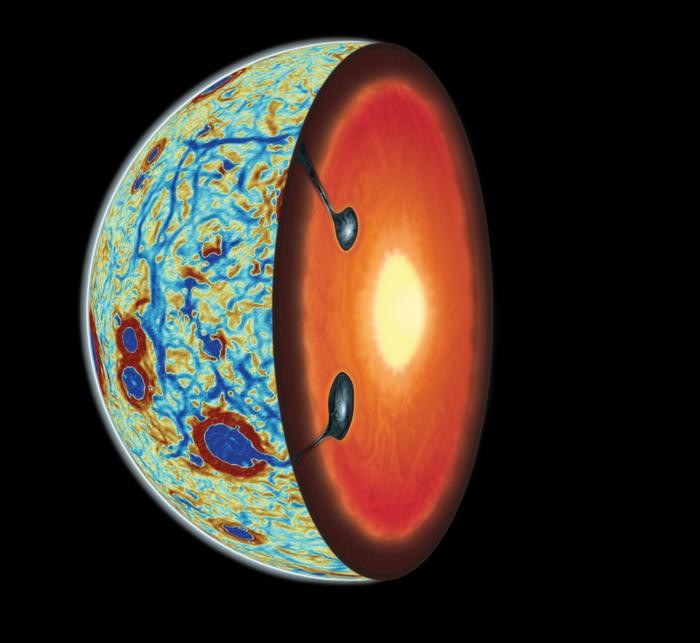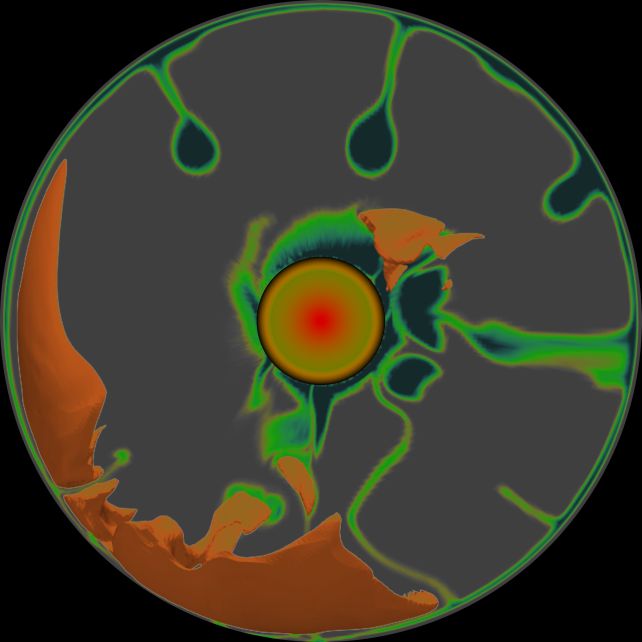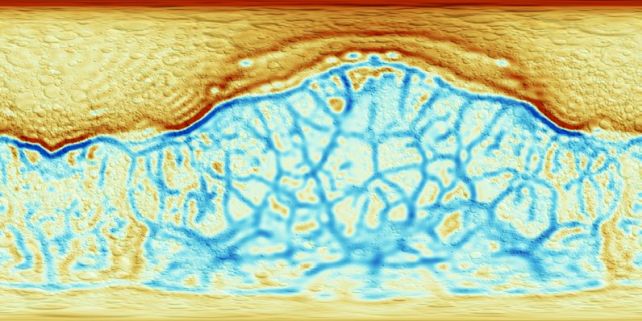The moon has been fascinating the eyes of mankind for thousands of years, as the great mysterious object of our sky. Although we know that it is a natural moon of our planet, on which people even managed to land, it hides many secrets that science is only gradually beginning to unravel.

The moon’s surface is chemically heterogeneous, so scientists suggest that this may be a consequence of the inversion of its mantle in the distant past, when it was younger. Scientists have long discussed the possibility of such a phenomenon, but new research supports this theory.
Researchers from the University of Arizona led a team that found that the gravitational map of the Moon was best explained by the lunar mantle overturning model. A series of simulations show how the gravitational anomalies of the Moon correspond to the location of dense rocks that have been preserved since its formation.
Scientists accurately date the event to about 4.22 billion years ago, when the Moon was formed as a result of a collision between a protoplanet and Earth during the era of active formation of the Solar System. One of the interesting features of the moon’s surface is the KREEP Terrane, a region that contains rare metals and elements such as potassium and phosphorus. This region intersects with basalt plains formed as a result of volcanic activity.

The find is surprising because the minerals found in the region are much denser than other rocks around. Scientists suggest that during the formation of the Moon, dense materials such as ilmenite sank into the mantle, while less dense materials rose to the surface. However, the exact mechanism of this process remains a matter of debate among scientists. Some scientists believe that geodynamic processes occurring inside the Moon could have caused this overturning of the mantle. Others believe that a major collision with Earth that occurred in the past could have affected the distribution of materials on the Moon, concentrating dense materials on one side.

The researchers used models to observe gravitational anomalies on the Moon, which were compared with data collected by NASA’s Gravity Recovery and Interior Laboratory (GRAIL) orbiters, a pair of spacecraft that spent more than a year in space creating a map of surface gravity on the Moon. Their results confirmed the hypothesis of the overturning of the lunar mantle and helped to establish the approximate time of this phenomenon.
Thus, the study of the Moon not only reveals its past, but also provides new information about the formation of planets in our Solar System.
Earlier, we reported on how NASA would create a clock for the Moon in which seconds would run faster.
According to sciencealert.com
Follow us on Twitter to get the most interesting space news in time
https://twitter.com/ust_magazine


